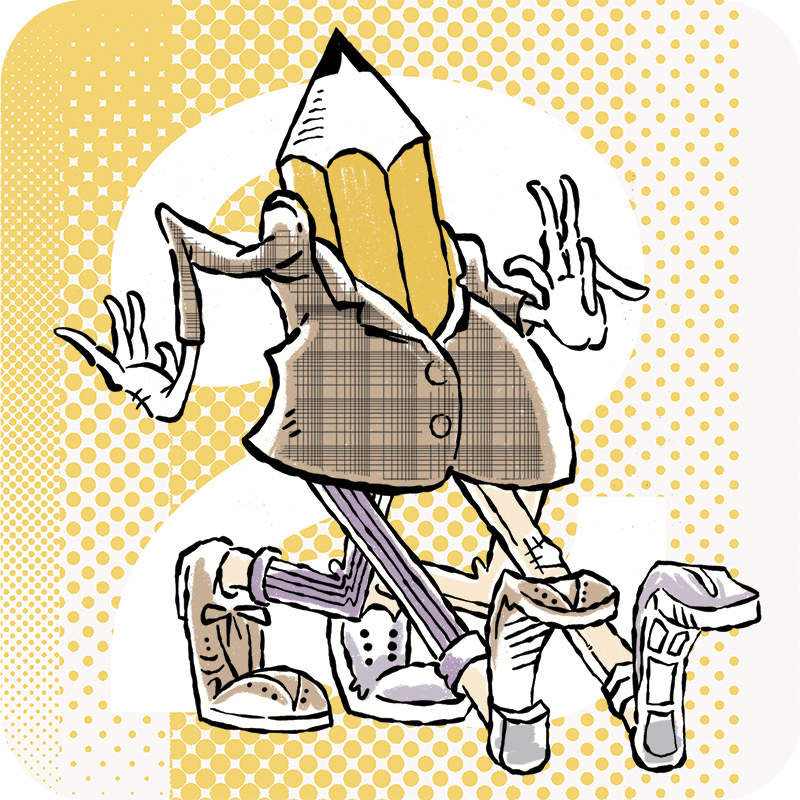Visions of North Beach
Patreon subscriber? Great! Listen to us read this to you.
San Francisco is one of those places with different mythologies that hinge on who you’re talking to and the era you’re talking about.
To many—especially those under, say, thirty-five—San Francisco is synonymous with Silicon Valley (the place and maybe the show) because the tentacles of the tech bros and their billions continue creeping farther and farther up the peninsula. It’s hard to ignore this, especially with glaring evidence like the big, fat middle finger of the Salesforce Tower flipping the bird to the rest of the skyline. Subtle and tasteful.
To others—especially those over fifty-five—the City by the Bay represents a bohemian utopia, the Promised Land of good coffee and free love. That, coupled with Be-Ins at Golden Gate Park, and at the intersection of Haight and Ashbury where hippies stood on the shoulders of The Beats to score and challenge the conventions of music, politics and bathing.
And to those in between, nostalgia is centered in a place of equal parts fog-shrouded westward hysteria, the woo-woo wonder of yogis and foodies, and the exotic, gritty creative marriage of street culture and cyberpunk. It was laid-back, detached Gen X cool.
Elliot’s first impression happened in the summer of 1994 for an internship. Remember the beginning of the “Welcome to the Jungle” video when Axl Rose wanders off the bus with a piece of wheat between his teeth and onto the mean streets of West Hollywood? Elliot’s arrival was sort of like that…except he took a plane, was in a different city and had far worse entry music at the airport. But other than that…well, you get the idea. He was twenty-one and knew this was someplace special.
Elliot’s familiarity with the 415 was mostly through skateboard magazines and videos. Even a wide-eyed Buckeye could imagine there was waaaay more to see in this unique place. He asked around (Fodor’s be damned!) and North Beach was at the top of the list. So off he went, passing hole-in-the-wall bars, worn Italian groceries and sketchy strip clubs.
With his only awareness of The Beats coming courtesy of the occasional English class poem—thank you, Mr. Ginsberg, for allowing him to accompany you in the supermarket—Elliot knew little about these artists. Remember, this was the dawn of the internet and ubiquitous smart phones weren’t even a twinkle in Monsieur Blackberry’s eye.
However, once Elliot arrived at the wedge-shaped building at 261 Columbus Avenue, he knew why the neighborhood had been given the nod. Hello, City Lights Bookstore.
The Beat movement may have begun in New York as we discussed in our scene-setting episodes, but City Lights can rightly call itself ground zero for the movement. Started in 1953, made an official San Francisco landmark in 2001 and still around today, it was originally founded as a paperbacks-only bookstore and soon grew to include a publishing arm as well. No one outside of the city cared much until the proprietor, Lawrence Ferlinghetti, decided to publish fellow poet Ginsberg’s “Howl,” causing all hell to break loose in 1957.
The store is a time capsule in all the best ways. The original vision to sell used books never really happened, but you would be excused for thinking it had. It’s impossible to escape the thought of standing in the shadow of literary and cultural giants, trodding the same creaky floors and imagining the ramblings of the intellectually curious—and drug-fueled rambunctious—among this maze of rooms and shelves. City Lights was a major gathering place back when San Francisco was a big, small town. Barnes & Noble it is not. In fact, one popular expression is that the store is a library that happens to sell its books. Come in and hang out, friend. No pressure.
During his visit, Elliot picked-up requisite copies of “Howl” and On the Road. A college friend and Elliot were busy producing a zine at the time and he grew up reading them, so it was only natural he helped himself to a handful of colorful specimens from a low shelf near the front.
In a setting like this, your mind starts racing. Vibrating. Pulsing. You wish you could gobble-up all of the content and history in the entire building Matrix-style. How cool to have been a fly on the wall where amazing personalities were pushing the envelope for what they believed, and continue to believe, is right. It’s calming and invigorating at the same time, like when Todd decides to pick-up the next round.
We like to think our podcast is a child of people and places like this. We celebrate curiosity, creativity and conversation. We appreciate concept and craft. City Lights began as a hangout for The Beats and has evolved into a vibrant and active foundation for all the movements and cultural shifts that have been compounding ever since in San Francisco and beyond. We hope our series on The Beats is able to do them half the justice that a funky glass-fronted triangular bookstore has.
And the best part? The building shares Jack Kerouac Alley with—what else?—Vesuvio’s, a bar.
